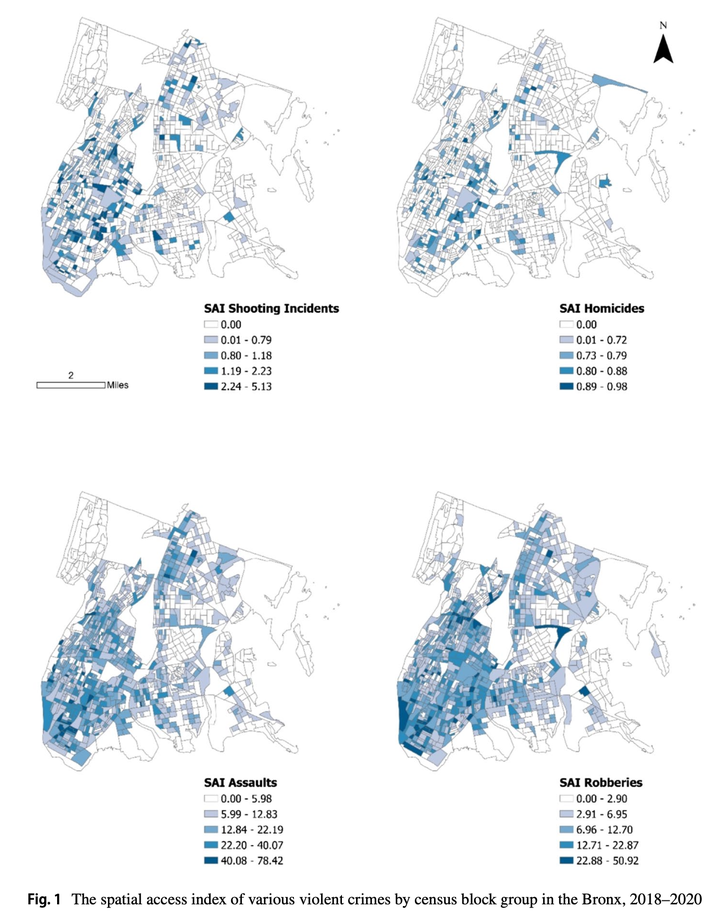Using a spatial access measure to assess the relationship between alcohol outlet types and various violent crimes in the Bronx, NY

Abstract
The spatial relationship between violent crime and alcohol outlets is well documented. Yet, it is unclear whether on- or off-premises alcohol outlets have greater effects on violent crime and whether this varies by interpersonal crimes and off- premises outlet subtype. This study addresses this gap by using both Routine Activities and Social Disorganization Theories. Using census block groups (n = 1,126) in the Bronx, NY, spatial access methods were used to measure violent crimes from 2018 to 2020 (n=28,587) and alcohol outlets from 2020 (n=1,984). Social disorganization measures consisting of various socioeconomic factors and accessibility factors were included. Five models were estimated using a Spatial Lag regression model. A positive direct, indirect, and total effect was observed for liquor, grocery, and drug stores on total violent crime exposure, but on-premise alcohol outlets was not related. Specific types of off-premises alcohol outlets were associated with various violent crimes, with liquor and grocery stores consistently related across all models. On-premises alcohol outlets were not associated with violent crime with the exception of assaults.